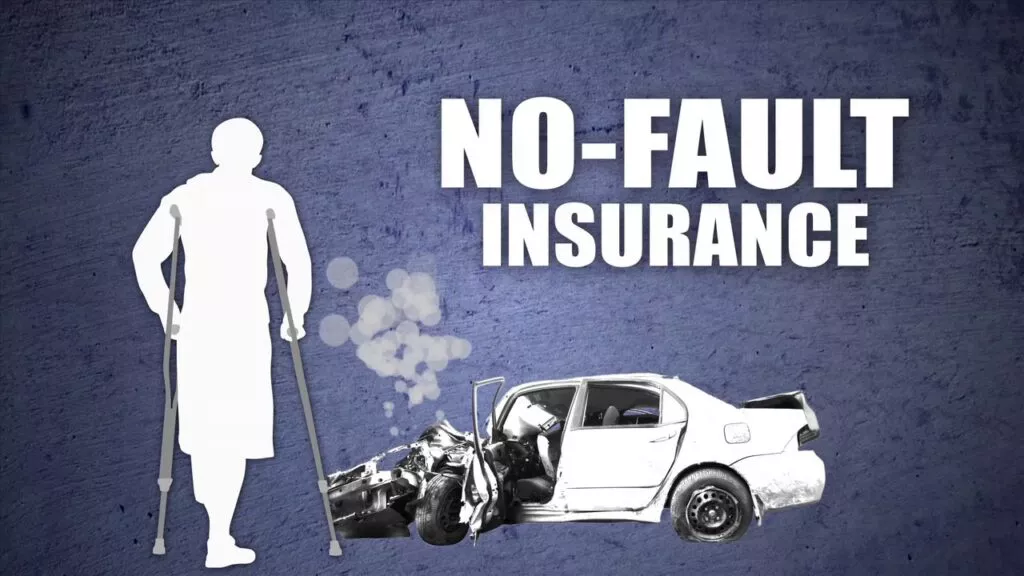Navigating the world of car insurance can be challenging. One term that often confuses people is “no-fault car insurance.” Understanding how no-fault insurance works is crucial for making informed decisions about your coverage.
What Is No-Fault Car Insurance
No-fault car insurance is a type of auto insurance system. It is designed to streamline the claims process after an accident. Under a no-fault system, your insurance company pays for your damages. This occurs regardless of who caused the accident.
The Purpose of No-Fault Insurance
No-fault insurance aims to reduce the number of lawsuits after car accidents. By having each driver’s insurance cover their costs, it simplifies and speeds up the claims process. This system helps reduce legal costs and speeds up compensation for injured parties.
How No-Fault Insurance Differs from Traditional Insurance
Traditional insurance systems rely on determining fault. The at-fault driver’s insurance pays for the damages and injuries. This process can be lengthy and complex. No-fault insurance eliminates the need to establish fault, which speeds up claims and payouts.
Benefits of No-Fault Car Insurance
No-fault car insurance offers several benefits:
Faster Claims Processing: Since there is no need to determine fault, claims are processed more quickly.
Reduced Legal Costs: Fewer lawsuits mean lower legal fees and court costs.
Guaranteed Payouts: Your insurance covers your damages, ensuring you receive compensation regardless of the other driver’s insurance status.
Limitations of No-Fault Car Insurance
Despite its benefits, no-fault insurance has limitations:
Limited Legal Recourse: You may have limited ability to sue the at-fault driver for damages.
Coverage Limits: No-fault insurance may not cover all types of damages, such as pain and suffering.
Higher Premiums: In some cases, no-fault insurance can lead to higher premiums.
States with No-Fault Insurance Laws
No-fault car insurance laws vary by state. Some states require no-fault insurance, while others do not. States with no-fault insurance laws include:
Florida
Michigan
New York
Pennsylvania
Types of No-Fault Coverage
No-fault insurance can include several types of coverage:
Personal Injury Protection (PIP): Covers medical expenses, lost wages, and other related costs.
Property Damage Liability: Covers damages to the other driver’s property.
Residual Liability Insurance: Provides coverage if you are sued for damages not covered by no-fault insurance.
How No-Fault Claims Work
Filing a no-fault insurance claim involves a few key steps:
Report the Accident: Notify your insurance company as soon as possible.
Submit a Claim: Provide details of the accident and your injuries or damages.
Receive Compensation: Your insurance company will review your claim and pay for covered expenses.
No-Fault Insurance and Medical Expenses
No-fault insurance is particularly beneficial for covering medical expenses. PIP coverage ensures you can receive medical treatment without worrying about who is at fault. This coverage can include hospital bills, surgery costs, and rehabilitation expenses.
No-Fault Insurance and Lost Wages
If you are unable to work due to an accident, no-fault insurance can cover lost wages. PIP coverage compensates you for income lost during your recovery period. This helps ease the financial burden of being unable to work.
see also: Rising Car Insurance Costs Expected to Continue
No-Fault Insurance and Property Damage
No-fault insurance typically covers damages to your vehicle and other property. However, it may not cover all types of property damage. It is important to understand what your policy covers and consider additional coverage if needed.
Limitations on Lawsuits
One of the key features of no-fault insurance is the limitation on lawsuits. In no-fault states, you can only sue the at-fault driver under certain conditions. These conditions vary by state but often include:
Severe Injuries: You can sue if your injuries meet a certain severity threshold.
High Medical Costs: If your medical expenses exceed a certain amount, you may be able to sue.
Permanent Disability: Permanent injuries or disabilities can also qualify for a lawsuit.
Choosing No-Fault Insurance
When selecting no-fault insurance, consider your needs and the laws in your state. Evaluate the types of coverage available and choose a policy that provides adequate protection. It is also important to compare premiums and coverage limits from different insurance providers.
No-Fault Insurance vs. Traditional Insurance
Comparing no-fault insurance to traditional insurance can help you understand which is best for you. Consider the following factors:
Claims Process: No-fault insurance offers a quicker and simpler claims process.
Legal Recourse: Traditional insurance may provide more opportunities to sue for damages.
Premiums: No-fault insurance can sometimes lead to higher premiums.
How to File a No-Fault Insurance Claim
Filing a no-fault insurance claim is straightforward:
Gather Information: Collect details about the accident, including photos and witness statements.
Notify Your Insurer: Contact your insurance company to report the accident.
Submit Documentation: Provide all necessary documents to support your claim.
Receive Compensation: Your insurance company will process your claim and pay for covered expenses.
Common Misconceptions About No-Fault Insurance
There are several misconceptions about no-fault insurance:
Myth: No-fault insurance eliminates all lawsuits. Fact: You can still sue under certain conditions, such as severe injuries or high medical costs.
Myth: No-fault insurance is more expensive. Fact: While premiums can be higher, the streamlined claims process can offset costs.
Myth: No-fault insurance covers all damages. Fact: No-fault insurance has limitations and may not cover all types of damages.
No-Fault Insurance and Rental Cars
No-fault insurance can also apply to rental cars. If you are involved in an accident while driving a rental car, your no-fault insurance may cover your injuries and damages. Check with your insurance provider to understand how your policy applies to rental vehicles.
No-Fault Insurance and Out-of-State Accidents
If you are involved in an accident outside of your home state, no-fault insurance can still apply. Your insurance company will cover your expenses according to your policy terms, regardless of the accident location. However, coverage may vary based on the laws of the state where the accident occurred.
No-Fault Insurance and Uninsured Drivers
No-fault insurance can provide protection if you are involved in an accident with an uninsured driver. Your insurance will cover your damages and injuries, ensuring you receive compensation even if the other driver is uninsured. This can provide peace of mind and financial protection.
Adjusting Your No-Fault Insurance Coverage
As your needs change, you may need to adjust your no-fault insurance coverage. Consider reviewing your policy annually and making changes as necessary. This can include increasing your PIP coverage, adding additional coverage options, or adjusting your deductibles.
Tips for Maximizing Your No-Fault Insurance Benefits
To get the most out of your no-fault insurance:
Understand Your Coverage: Know what your policy covers and what it does not.
Keep Detailed Records: Maintain records of your expenses and communications with your insurer.
Seek Medical Attention: Get medical treatment promptly to ensure your expenses are covered.
Review Your Policy: Regularly review your policy to ensure it meets your needs.
Common Scenarios Covered by No-Fault Insurance
No-fault insurance can cover a variety of scenarios, including:
Minor Accidents: Quick compensation for minor injuries and vehicle damage.
Serious Accidents: Coverage for medical expenses and lost wages after a serious accident.
Uninsured Drivers: Protection if you are involved in an accident with an uninsured driver.
Out-of-State Accidents: Coverage for accidents that occur outside of your home state.
Potential Drawbacks of No-Fault Insurance
While no-fault insurance offers many benefits, it also has potential drawbacks:
Limited Legal Recourse: Restrictions on lawsuits can limit your ability to seek compensation.
Coverage Limits: No-fault insurance may not cover all types of damages or injuries.
Higher Premiums: Some drivers may face higher premiums for no-fault coverage.
Evaluating Your No-Fault Insurance Needs
When evaluating your no-fault insurance needs, consider:
Your Driving Habits: Frequent drivers may benefit from higher coverage limits.
Your Health Insurance: Consider how your health insurance interacts with PIP coverage.
Your Financial Situation: Ensure you have adequate coverage to protect your assets.
Conclusion
No-fault car insurance simplifies the claims process and provides quick compensation after an accident. By understanding how no-fault insurance works, you can make informed decisions about your coverage. Consider the benefits and limitations, and choose a policy that meets your needs. Regularly review your coverage and stay informed about changes in no-fault insurance laws. With the right coverage, you can enjoy peace of mind and financial protection on the road.




















